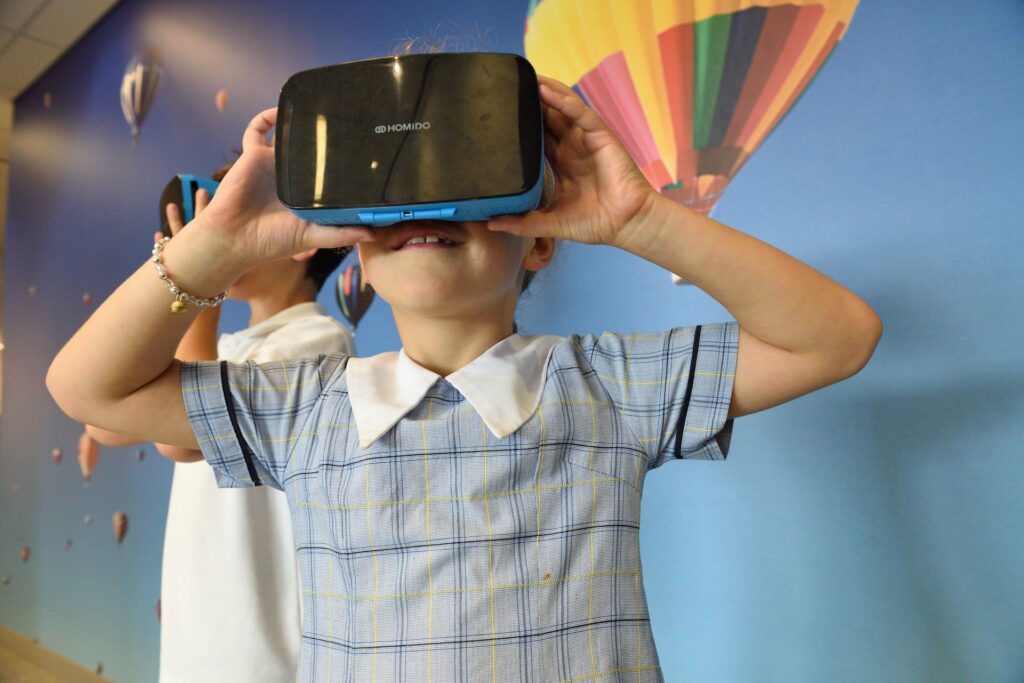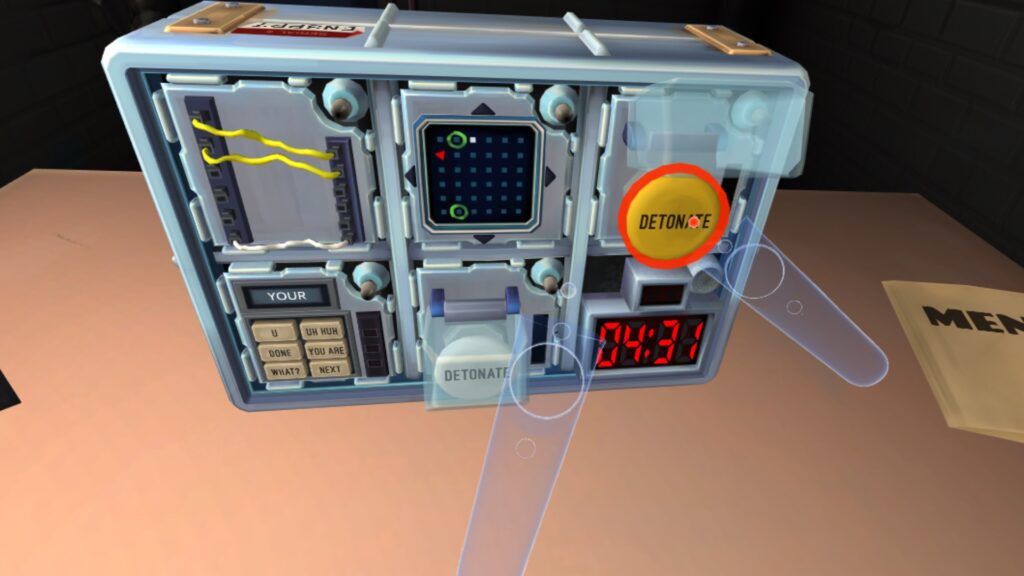We all know how the entertainment industry has been at the forefront of innovation, constantly pushing the boundaries of technology to deliver more immersive and diverse experiences. And it could not be different with games, one of the most profitable segments in the industry!
This unending quest for innovation has culminated in the emergence of wearable gaming, but what is it all about anyway?
Throughout this article, we’ll dive into the world of wearable gaming, exploring its definition, advantages over traditional games, some of its current applications, future potential, and the challenges it must overcome. In other words, you’ll learn everything you need to know about this budding niche within the gaming industry!
What is wearable gaming?
In short, wearable gaming is a term used to describe using wearable electronic devices to play games. Said gadgets get this name from the fact they’re worn on the body – picture fitness trackers and smartwatches wrapped around wrists, smart glasses perched on noses, and augmented reality (AR) or virtual reality (VR) headsets immersing its users in digital realms.

What does wearable gaming offer over traditional gaming?
Unlike conventional gaming, which often keeps us anchored to a screen, wearable gaming leverages these devices to blend the digital and physical realms, allowing players to interact with games and their environments in ways never seen before.
But that’s not all! Let’s take a look at other advantages wearable gaming provides:
- It is very portable: most wearable devices are portable and convenient ways to play games on the go, making use of spare, idle moments in their daily routines (such as those long commutes and breaks) to dive into quick gaming sessions;
- It promotes physical activity: many wearable games require players to move, jump, and even physically interact with their surroundings. This provides a fun and active gaming experience while promoting fitness and exercise. Sure, it’s not much, but contrasts with our current gaming experiences, which are mostly experienced while sitting perfectly still;
- It enhances social experiences: wearable gaming often incorporates social features that make it easy for players to connect to each other. Whether being collaborative adventures or competitive challenges, they go hand in hand with today’s interconnected world;
- It comes with novel user interfaces: innovative features like gesture controls, voice commands, and eye-tracking technologies are very intuitive to use and have the potential to redefine how we interact with games. Players also benefit from the added accessibility these devices can bring;
- It has immense variety: as wearable devices come in many shapes, like watches, headsets, and more, there is a variety of games that grows with every passing year. With so many things on the menu, there’s always something for everyone – from action-adventure games with more explosions than any Michael Bay movie to puzzles that will turn your brain upside-down;
- It has educational opportunities: wearable gaming, especially when talking about AR and VR technologies, has found its way into education. They are awesome at offering learning experiences that are far more interactive than the usual class, which helps knowledge retention and keeps students engaged. It also provides a safe and risk-free environment for learning complex procedures, like airplane repairs and surgeries;
- It offers deeply immersive experiences: just like the previous point, AR and VR headsets can plunge players headfirst into worlds that feel a bit too real. Gamers can experience 360-degree environments where actions in the real world translate smoothly into the game, which creates an unparalleled sense of presence.
What types of wearable gaming applications are there?
As mentioned above, wearable games come in multiple shapes, each offering unique experiences and catering to diverse preferences.
AR games, for example, blend the real world with digital elements by overlaying them on top of a screen or smart glasses. Pokémon GO is one of the most acclaimed AR games and it shows how this technology can turn ordinary streets into hunting grounds for digital pocket monsters.
VR experiences, on the other hand, attempt to fully immerse players in an environment where everything is simulated, shutting out the physical world entirely. For example, Beat Saber provides an intensive experience where players engage with the game using handheld motion controllers, wielding them as light sabers to slice through an unstoppable barrage of beats.
Escape room games are also popular within the wearable gaming community. They take the concept of puzzle-solving to the next level, with players having to work together to find hidden items, decipher cryptic clues, and unlock mysteries to escape from virtual rooms. As an example, Keep Talking and Nobody Explodes VR requires players to communicate efficiently to defuse a bomb while going through its manual.

Fitness-oriented wearables have also taken a step into gaming. There are many fitness-tracking bands with native integration to smartphones and VR devices. Through gamification, players are encouraged to stay active, with challenges and achievements being rewarded after every session. Titles like “Supernatural” can transform workouts into engaging adventures set in otherworldly environments, which can be a breath of fresh air.
Casual and social gaming have also found a niche in wearables. Again, AR and VR headsets are the main technologies behind their success, offering lightweight and engaging multiplayer experiences. Star Wars: Jedi Challenge is a game that leverages local 1v1 battles with lightsaber duels and even “holochess” matches, which are perfect for quick banter among friends.
Finally, we have story-based games, which take advantage of narrative storytelling and immersive technologies to transport players into rich stories that unfold around them. In these experiences, gamers often play an active role in shaping the story’s outcome, with choices and interactions with NPCs and objects being commonplace.
The future of wearable gaming
While wearable gaming is still in its early stages of development and widespread adoption, there are several factors suggesting it has the potential to become mainstream in the next few years.
For example, wearable devices are getting cheaper by the year, which makes them cheaper for the average consumer. The development of new and innovative wearable gaming apps is also likely to increase, which could further boost their sales and popularity.
It’s also important to pinpoint how the increasing integration of wearable devices with other technologies, such as 5G and artificial intelligence, can be critical for this niche. Faster connection speeds usually lead to lower latencies, which are essential to ensure a smooth gaming experience.
Even with so much to go, the wearable gaming technology market is forecast to reach a share of US$76.4 billion by 2032, growing at a staggering 14.6% a year from 2022 according to research by Future Market Insights.
Obstacles to overcome in wearable gaming
Despite the promising future of wearable gaming, several noteworthy obstacles need to be addressed before it sees even higher adoption rates and success.
Firstly, physical limitations can pose a challenge, especially so for individuals with restricted movement. Many wearable gaming experiences involve physical interaction for movement tracking and gestural input purposes, which can be challenging (if not outright impossible) for those with mobility impairments.
Privacy and data concerns are also highly debated in our interconnected world, especially after many scandals involving big tech companies. Wearable devices often collect a wealth of personal information, which can include location data, biometric information, and more. Ensuring robust data protection and privacy measures is key to preventing potential data leaks and malicious use of player data.

Battery life remains an issue in the world of wearables. Gaming can be an energy-intensive activity, and longer play sessions can rapidly drain device batteries. Extending their lifespans while maintaining sufficient gaming performance is a technological hurdle not easy to overcome, which might take decades to properly solve.
Other issues plaguing AR and VR devices in particular are motion sickness, eye strain, and discomfort. Some players might experience those symptoms while going through deeply immersive experiences, more so if there’s a noticeable delay between real-world actions and in-game ones.
Finally, there’s the risk of social isolation. Games can be intensely alluring experiences, sometimes isolating players from their physical surroundings and real-world interactions, and wearable gaming apps are no exception to the rule. Striking a balance between immersive gameplay and maintaining social connections is a challenge that developers must consider, especially those working on MMO games.
Conclusion
As seen throughout this article, wearable gaming represents an exciting frontier in the world of gaming. With high-tech devices like AR and VR headsets, smartwatches, and fitness trackers, gamers around the world are discovering new ways to immerse themselves in diverse gaming experiences.
Driven by factors like high portability, convenience, the possibility of social interactions, and unique gameplay opportunities that defy the boundaries between the real and virtual worlds, the popularity of wearable gaming continues to grow. We can expect even more innovative and immersive applications in the near future as technology keeps advancing at a breakneck pace.
Having said that, it’s essential to recognize how this emerging field also has its unique set of challenges to overcome. Addressing physical limitations, ensuring user data privacy, improving battery life, mitigating motion sickness, and preventing social isolation are examples of obstacles wearable gaming currently faces.
At the end of the day, one thing is clear: the potential of wearable gaming is vast and largely untapped, making it a trend that’s here to stay. At Main Leaf, a professional game development studio, we’re passionate about creating fantastic games and pushing the boundaries of current gaming technologies.
If you’re looking to bring your gaming vision to life or need some help with specific parts of your game, our team of 70+ highly qualified professionals is here to offer you a helping hand.
Contact us below today to start the development process of your upcoming masterpiece – we guarantee you won’t be disappointed working with us!

